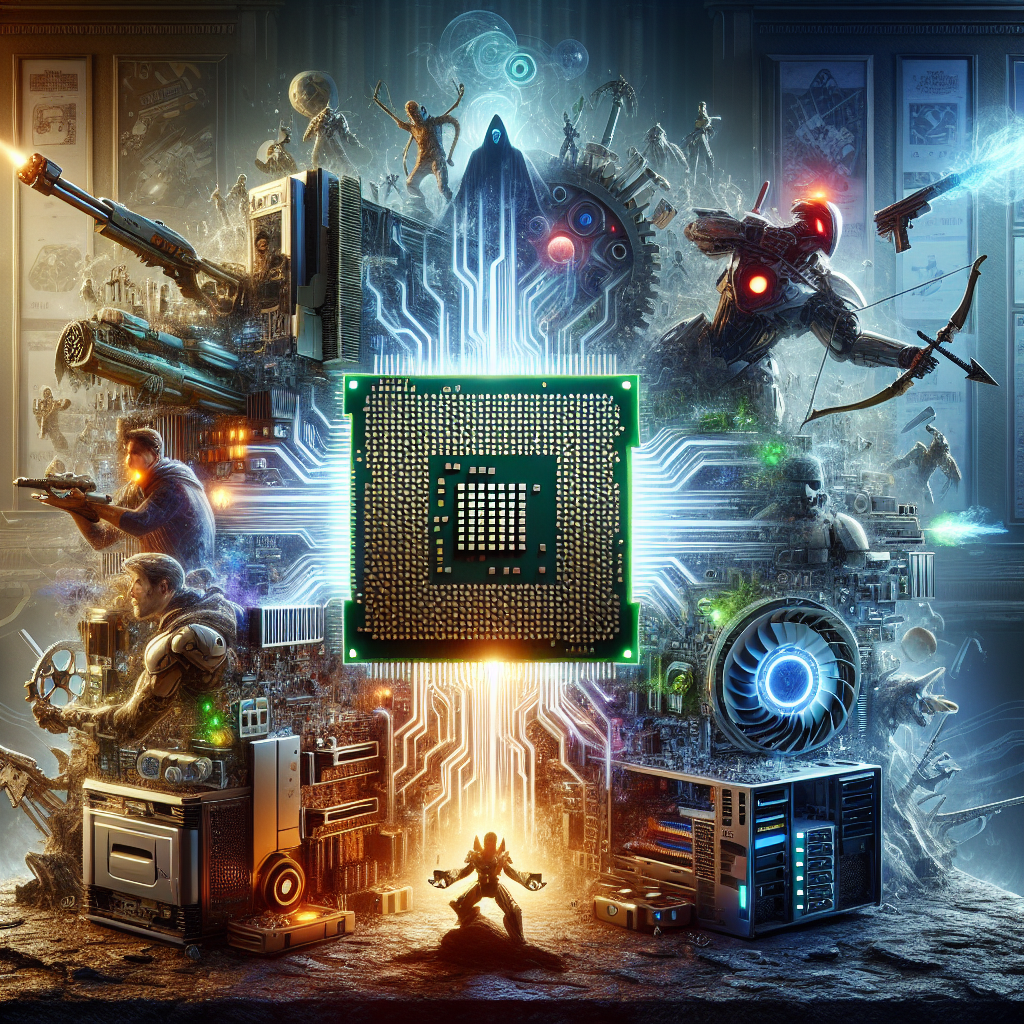When it comes to PC gaming, the central processing unit (CPU) plays a crucial role that often goes underappreciated amidst the spotlight on graphics cards. Modern multi-core processors have introduced a level of complexity that directly impacts gaming performance. These advanced CPUs, equipped with features like asymmetric cores, chiplet designs, and integrated graphics, are essential for extracting every last frame from today’s demanding games.
The evolution of CPUs has seen a shift from single-core to multi-core designs, enabling simultaneous processing of multiple tasks. This advancement is particularly beneficial in gaming, where a multitude of operations, from rendering graphics to calculating physics, must occur in real-time. The intricate dance between these cores ensures that games run smoothly, provided the CPU is capable of keeping pace with the demands placed upon it.
Understanding CPU and GPU Synchronization
The synchronization between the CPU and GPU is pivotal for a seamless gaming experience. A mismatch, where the CPU is unable to keep up with the GPU, can lead to a bottleneck situation, causing several performance issues. These issues can manifest as:
- Stuttering: Irregular pacing in frame delivery, leading to a jarring experience.
- Loss of responsiveness: Delayed or unregistered inputs from the player.
- Lower average frame rates: A reduced number of frames being rendered per second, resulting in less fluid motion.
These symptoms can significantly detract from the gaming experience, making it essential to choose a CPU that complements the GPU. Ensuring that both components are well-matched is key to maintaining high performance and avoiding these common bottlenecks.
The Role of Multithreading in Gaming
There’s a common misconception that games do not utilize multithreading and that the extra cores in a CPU don’t significantly impact game performance. However, this is not entirely accurate. Modern games are increasingly designed to take advantage of multiple cores through multithreading. The game loop thread is a critical component that manages the game state, player inputs, and various game component changes, such as NPC behavior and sound, which may run on separate threads.
This multithreaded approach allows for more efficient processing, as the game loop can be assigned to one core, while other tasks are distributed across additional cores. This not only improves overall performance but also ensures that the game can maintain a consistent level of responsiveness and fluidity.
The Significance of CPU Cache
The CPU cache plays a vital role in gaming performance. It’s a small amount of very fast memory located on the CPU itself, which stores the most frequently used instructions to avoid the slower process of retrieving them from the main system RAM. There are different levels of cache, each serving a unique purpose in the CPU’s data retrieval and storage hierarchy.
| Cache Level | Characteristics |
|---|---|
| L1 Cache | Smallest in size but fastest, located closest to the CPU cores. |
| L2 Cache | Larger than L1, slightly slower, but still on the CPU die and close to the cores. |
| L3 Cache | The largest and slowest of the three, can be on the CPU or the motherboard, shared between all cores. |
Understanding the nuances of CPU cache can help gamers and system builders make informed decisions when selecting a processor for their gaming rig, ensuring that the CPU can efficiently handle the demands of modern games.
Choosing the Right CPU for Gaming
When selecting a CPU for gaming, several factors must be considered to ensure optimal performance. Budget is often a primary concern, but it’s also important to look at the core count and the generation of the technology. While a higher core count can be beneficial, the newest chip technology can offer significant improvements in efficiency and performance.
One key factor is the instructions per clock (IPC), which measures the amount of work a CPU can perform in one clock cycle. A higher IPC indicates a more efficient processor, capable of executing more instructions at the same clock speed compared to older models. Additionally, modern CPUs may include new instruction sets, such as AVX-512, which can further enhance performance in specific applications and games.
For gamers, investing in a modern CPU with a high IPC and support for the latest instruction sets can lead to a better gaming experience and extend the longevity of their gaming system. It’s not just about raw speed; it’s about the smart utilization of technology to achieve the best possible performance.
Conclusion
In summary, the CPU is a critical component in a gaming PC, working in tandem with the GPU to deliver the best possible gaming experience. From ensuring smooth gameplay through proper synchronization with the GPU to leveraging multithreading capabilities for efficient game processing, the CPU’s role is multifaceted. The cache levels within the CPU also play a significant part in performance, affecting how quickly data can be accessed and processed.
Choosing the right CPU involves considering factors such as budget, core count, IPC, and support for the latest instruction sets. By understanding these aspects, gamers can make informed decisions that balance cost with performance, ultimately leading to a more enjoyable and future-proof gaming setup.
This content has been created with editorial independence, despite the support from Intel. The insights and advice provided aim to inform and benefit the gaming community, reflecting the importance of CPUs in gaming performance.

